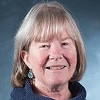4.6: Exercise 3 - Estimating cell densities with a spectrophotometer
- Page ID
- 17515
The spectrophotometer provides a “quick and dirty” way to estimate the density of cells
in a culture. In contrast to spot plates, which must be incubated for several days before colonies appear, spectrophotometer readings can be instantly converted into cell densities. On the other hand, the method does not discriminate between living and dead cells. The spectrophotometric method is based on light scattering by cells in the culture. When the light in a spectrophotometer hits a large particle such as a cell, light rays are deflected from a straight path and these light rays may not reach the detector. The greater the number of cells in a sample, the more light scattering occurs. The light scattering ability of a cell depends on its size and geometry, so a calibration curve is necessary to extrapolate optical density measurements to cell number. For example,
the same number of yeast cells would scatter light more than the same number of bacterial cells, because the bacterial cells are much smaller.
Light scattering is measured with the spectrophotometer set to report absorbance. Because the principles used to measure light scattering and absorbance are different, the amount of light scattered by a solution is referred to as its “optical density” rather than its “absorbance.” The optical density of a sample analyzed at 600 nm is abbreviated OD600, with the subscript indicating the wavelength used for the measurement.
Estimating cell densities with the spectrophotometer
Follow the directions in Chapter 2 for operating the GeneSys 20.
1. Turn on the GeneSys 20 spectrophotometer. Adjust the wavelength of the monochromator to 600 nm.
2. Fill a cuvette with 1.0 mL deionized water to serve as the blank. Orient the cuvette in the holder so that the flat side of the cuvette faces the front of the instrument. Close the lid and press the “0 Abs/100%T” button to establish a baseline value for further measurements.
3. Replace the blank with a cuvette containing 1 mL of undiluted culture. Close the lid and
read the OD600. Record this value in your lab notebook. If the optical density of the sample is greater than 1.0, dilute the sample 1:10 with deionized water and read the optical density again. (The linear relationship between the OD600 and cell density is lost when OD600 values exceed 1.0) Record the new value in your lab notebook, noting how you diluted your sample. Dispose of all cell material in the white liquid waste container.
4. Repeat step 3 with each of your cultures.
5. Calculate an approximate cell density for each sample, assuming that an OD600 of 1.0 corre- sponds to approximately 1.3 x 107 cells/mL. Use only data where the OD600 is less than 1.0 for these calculations.


